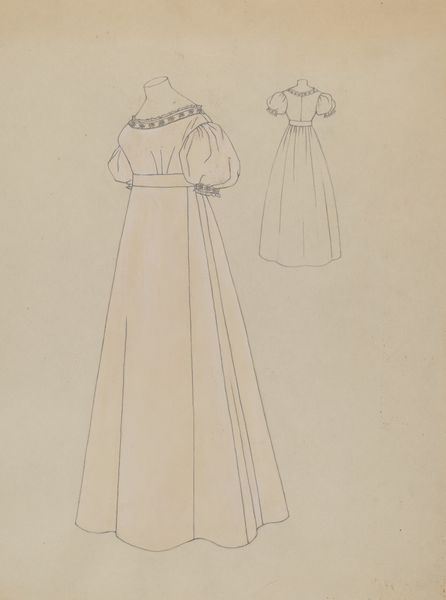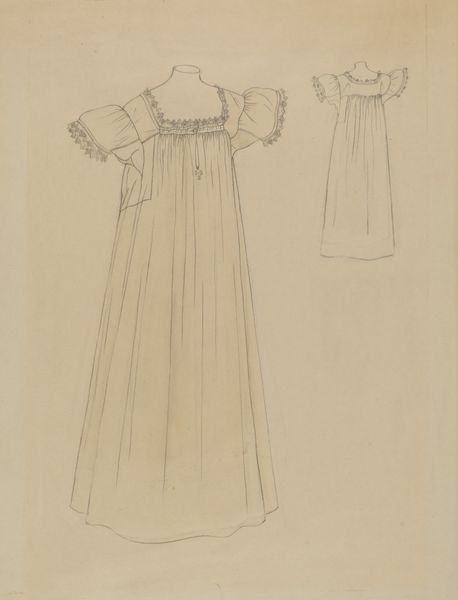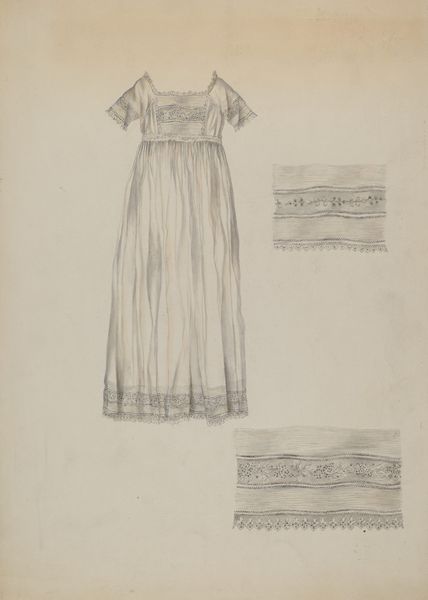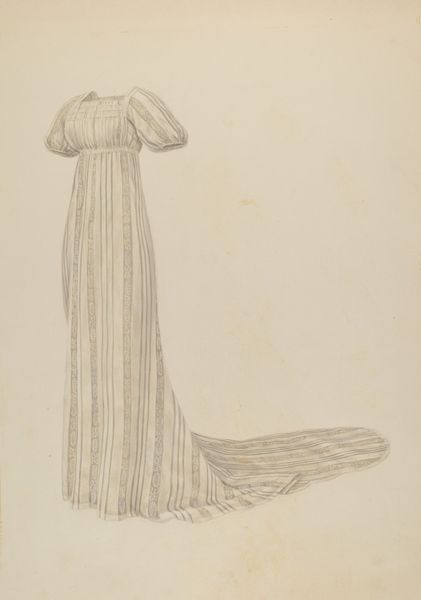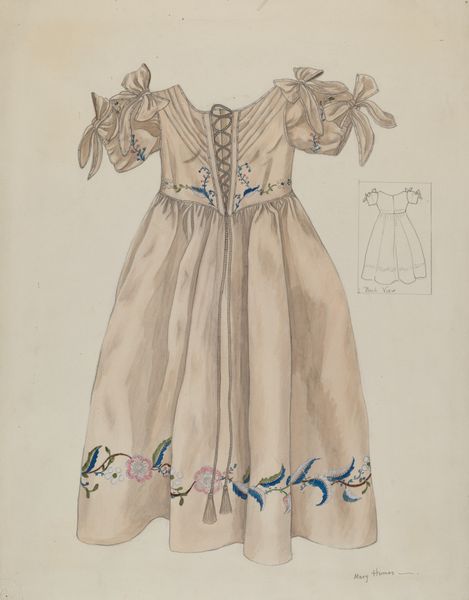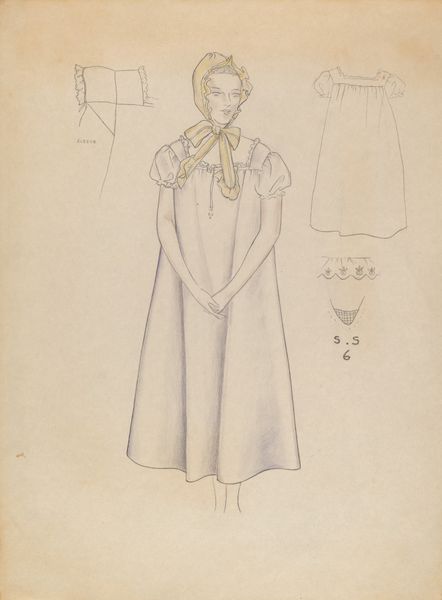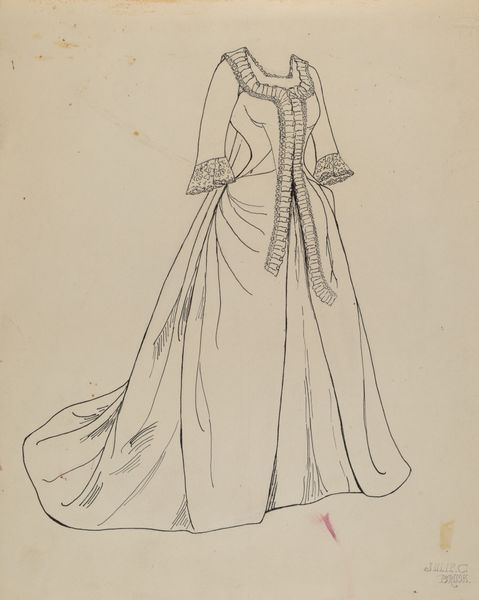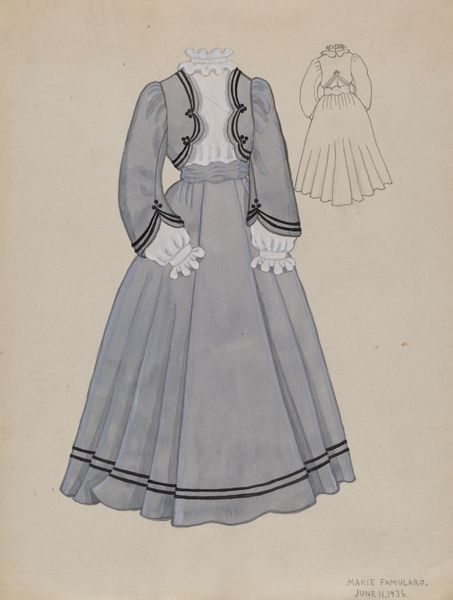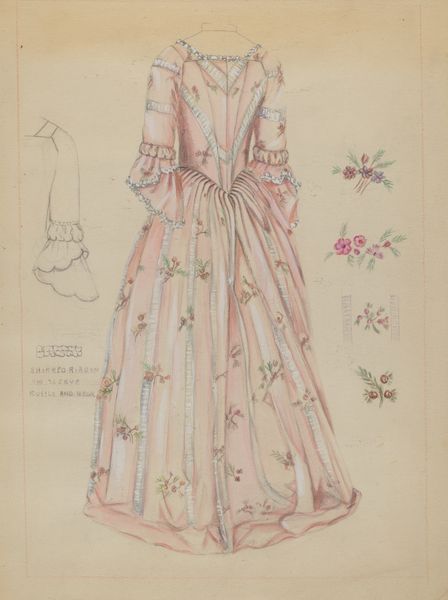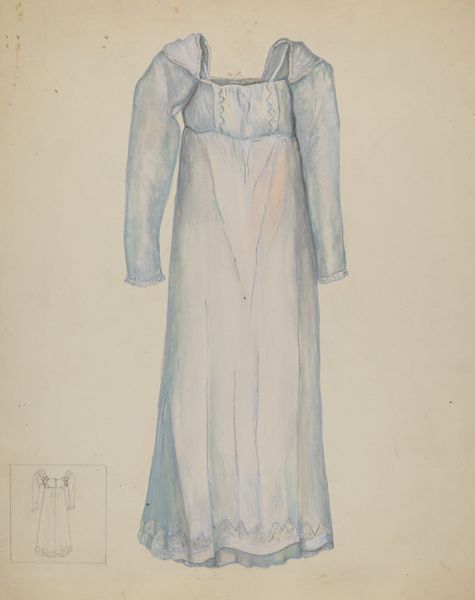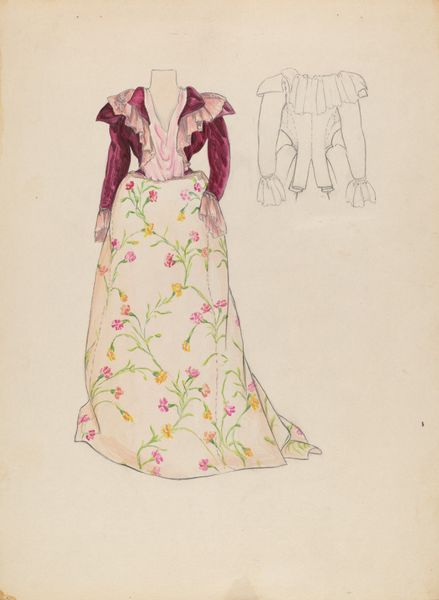
drawing, paper, watercolor
#
portrait
#
drawing
#
figuration
#
paper
#
watercolor
#
watercolour illustration
#
watercolor
Dimensions: overall: 55.6 x 38.1 cm (21 7/8 x 15 in.)
Copyright: National Gallery of Art: CC0 1.0
Editor: So, this is Gwyneth King’s "Gown and Slipper," from around 1936, a watercolor and ink drawing on paper. The gown is only sketched, while the slippers are more detailed, and they're quite eye-catching. What strikes you about the materials and execution of this piece? Curator: The deliberate contrast in finish is really interesting, isn’t it? The almost ghostly, unfinished gown paired with these luscious, detailed slippers speaks volumes about the relationship between garment production and consumption during that period. Think about it – the gown, perhaps representing mass-produced fashion, is merely sketched, an idea. Editor: Almost like a template. Curator: Exactly! While the slippers, these individual objects of desire, are rendered with such care and attention to detail. What does that say about the values projected onto luxury items versus the clothes we actually wear? Consider the labour involved; a single, well-crafted pair of shoes versus a mass-produced garment. Editor: It's like she's showing us the different stages of production or different kinds of craftsmanship, like "high art" versus design for manufactured goods. Curator: Precisely. We need to remember this was painted in the 1930s during economic uncertainty; these luxury items represent aspirational ideals and escapism. And look closely; she’s chosen watercolour. Why that, as opposed to a more “finished” medium? Editor: It’s cheaper than oils? More readily available? Curator: Perhaps both. The accessibility of the medium mirrors the democratisation of fashion itself. The process of *making* the artwork seems to mirror how the *clothing* was being manufactured. Interesting, isn't it? Editor: I see that. I hadn’t thought about it that way. The process really does become the point. Curator: And by understanding that process, we begin to unpack the complexities of fashion, labor and the societal aspirations embedded within these everyday objects.
Comments
No comments
Be the first to comment and join the conversation on the ultimate creative platform.
